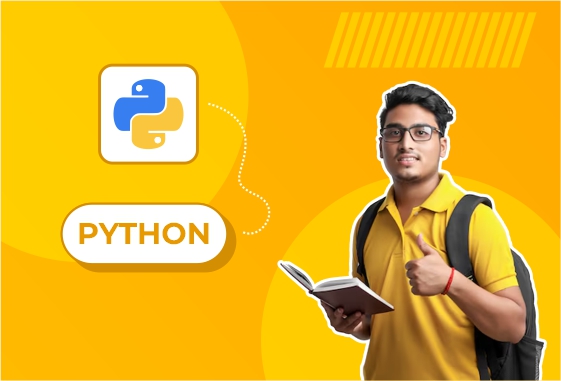
Chatbot Development
The Chatbot Development data science project involves creating an intelligent chatbot capable of engaging in conversations with users, answering their queries, and assisting with tasks through text or voice. The project leverages Natural Language Processing (NLP), machine learning, and sometimes deep learning techniques to understand and respond to user inputs. The chatbot could serve various purposes, such as customer support, personal assistants, or information retrieval.
Project Overview:
The Chatbot Development project aims to build a system that can simulate a conversation with human users, understanding their questions and providing relevant responses. It typically includes designing the user interface, developing the backend using NLP techniques to interpret user input, and using machine learning models to improve the chatbot's performance.
The project can be categorized into two main types of chatbots:
Rule-Based Chatbots (Narrow AI): These chatbots follow predefined scripts or rules to respond to users. They are limited in scope and can't handle complex conversations.
AI-Based (Intelligent) Chatbots: These chatbots use machine learning and NLP models to understand and generate responses. They can engage in more complex conversations and learn from interactions.
Steps Involved:
Data Collection:
Dataset: For a chatbot project, datasets typically consist of conversational data, such as:
Customer Support Logs: Previous customer queries and responses.
Dialogue Datasets: Pre-existing datasets like Cornell Movie Dialogues, Persona-Chat, or Chatbot Dataset on Kaggle.
FAQ Data: Frequently asked questions and their answers for specific domains (e.g., e-commerce, banking).
Domain-Specific Data: If developing a chatbot for a specific industry (e.g., healthcare, finance), collect domain-specific queries and responses.
Data Preprocessing:
Text Cleaning: Remove unnecessary characters, stopwords, punctuation, and perform lowercasing.
Tokenization: Break down text into smaller pieces like words or phrases (tokens).
Named Entity Recognition (NER): Identify entities (names, dates, locations) in the text to help with more accurate responses.
Text Normalization: Convert words into their root form (lemmatization or stemming).
Vectorization: Convert text into numerical data using techniques like TF-IDF or word embeddings (e.g., Word2Vec, GloVe) for deeper understanding of the input.
Intent Recognition:
Intent Classification: Identify the user's intent (the purpose behind their message), such as asking a question, requesting an action, or making a statement. Popular algorithms include:
Logistic Regression
Support Vector Machine (SVM)
Random Forest
Neural Networks
Deep Learning Models: You may use models like Convolutional Neural Networks (CNNs) or Recurrent Neural Networks (RNNs) for better text understanding.
Transformers (BERT, GPT): Advanced models like BERT or GPT can be fine-tuned for intent classification and question answering, providing a more dynamic and adaptable chatbot.
Response Generation:
Rule-Based Responses: Use predefined scripts or rules to provide direct answers based on recognized intents.
Retrieval-Based Models: The system retrieves responses from a database or knowledge base based on user input. It selects the most appropriate response from a set of predefined responses.
Generative Models: For more advanced chatbots, generative models (e.g., Seq2Seq, Transformer models) are used to generate responses dynamically based on user input. These models produce new sentences, allowing for more natural and varied conversations.
Pre-trained Language Models (GPT, BERT): These models can generate highly sophisticated and contextually accurate responses.
Dialog Management:
State Management: In a conversation, tracking the context of the dialogue is crucial. Dialog systems often use state machines to track conversation states and manage the flow of interactions.
Contextual Understanding: The system should retain memory of previous interactions within a session to respond more accurately and naturally. This involves managing context vectors or using memory networks.
Model Training and Evaluation:
Train-Test Split: Divide the dataset into training and testing sets to evaluate how well the chatbot performs with new data.
Cross-Validation: Ensures that the model performs consistently across different subsets of the dataset.
Evaluation Metrics:
Accuracy: Measures how well the chatbot predicts intents correctly.
Precision, Recall, and F1-Score: Evaluate how well the chatbot identifies and responds to specific intents.
BLEU Score: Measures the similarity between the generated response and a reference response (for generative chatbots).
User Satisfaction Metrics: Track user feedback and conversation success (e.g., user ratings or task completion rate).
Hyperparameter Tuning:
Optimization: Use techniques like grid search or random search to tune hyperparameters of machine learning models (e.g., number of layers in a neural network, learning rate).
Fine-Tuning Pre-trained Models: If using transformer models like BERT or GPT, fine-tune these models on your domain-specific data for better performance.
Integration and Deployment:
Web or Mobile Integration: Deploy the chatbot to platforms like websites, mobile apps, or messaging apps (e.g., Facebook Messenger, Slack, WhatsApp).
API Development: Build APIs to handle the interaction between the chatbot and external systems (e.g., databases, other services).
Cloud Deployment: Services like AWS, Azure, or Google Cloud can be used to deploy the chatbot, scale it based on demand, and integrate with existing systems.
Continuous Learning: Implement a feedback loop where the chatbot learns from user interactions to improve over time. This can be done by collecting conversation logs, analyzing mistakes, and retraining the model.
Tools and Technologies:
Programming Languages: Python, JavaScript
Libraries/Frameworks:
NLP Libraries: NLTK, spaCy, TextBlob
Deep Learning Frameworks: TensorFlow, Keras, PyTorch
Transformer Models: Hugging Face Transformers (for models like BERT, GPT, T5)
Chatbot Frameworks: Rasa, ChatterBot, Botpress, Dialogflow (Google)
Web Frameworks for Deployment: Flask, Django, FastAPI
APIs for Integration: Twilio, Slack API, Facebook Messenger API
Conclusion:
The Chatbot Development project is a great way for data science students to apply NLP, machine learning, and deep learning techniques to create intelligent systems that can automate conversations. Building a chatbot requires expertise in understanding natural language, handling user intent, managing dialogue states, and generating appropriate responses. This project not only helps students grasp the complexities of human-computer interaction but also enables them to create real-world applications for customer service, personal assistance, or even entertainment. As chatbots continue to grow in popularity, this project offers a hands-on opportunity to develop a solution that can handle real-world tasks and improve user experiences.





